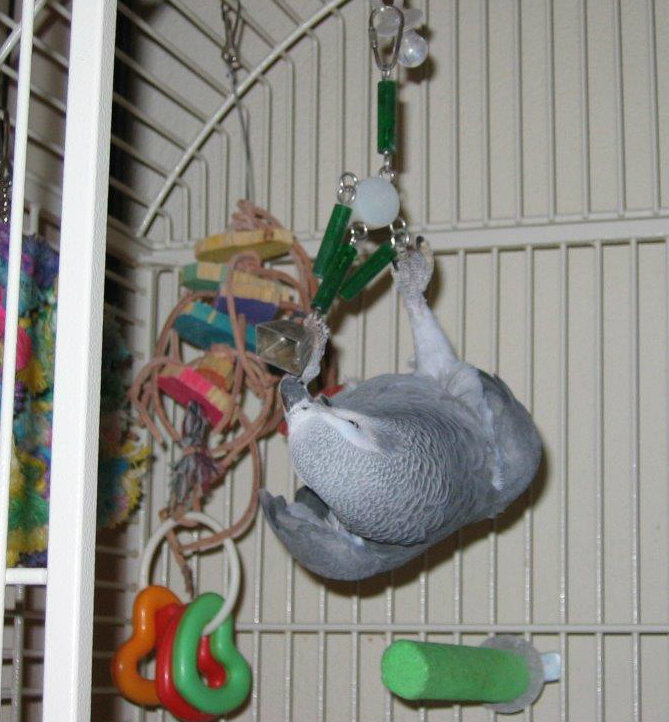African
Grey Myths
|
|
So many myths surround this sensitive and intelligent companion bird. Some of these myths have assumed the status of fact by virtue of repetition, but repetition does not make them true. Some of the most common myths are "Greys are clumsy", "Greys need more calcium", "Greys pluck", "Greys are one person birds" and "Greys are shy". Nothing could be further from the truth. MYTH I - AFRICAN GREYS ARE CLUMSY. Greys in the wild are graceful birds. Gracefulness is an innate characteristic of Greys and it does not disappear in our domestically bred birds. When one finds a "clumsy" Grey, I believe that the bird has been made so by his human caretakers. Clipping a baby Grey's wings before he has learned to fly is the major human act that fuels the myth of the clumsy Grey. A bird's graceful potential is profoundly affected when he has not been permitted to learn to fly. Learning to fly with proficiency and a systematic bountiful weaning program are two of the most important intervals in a bird's life. A Grey baby who is allowed to develop his flying skills benefits from it for the rest of his life. While learning to fly, a Grey learns valuable lessons in coordination and control. The awkward clumsy Grey of myth is a bird who has been denied his birthright by his human caretakers. Self-confidence, elegance and coordination result when a Grey is allowed to develop flight proficiency as nature intended. Fear, insecurity and clumsiness adversely affect a young bird and can produce an adult who lacks the sense of self required to live in harmony with humans. Self-assurance and a belief in one's abilities benefit a bird as much as it does a human. A second major cause for a Grey being clumsy is clipping a bird's wings incorrectly. A severe or improper clip, even though the bird has learned to fly, can contribute to loss of confidence. A bird's inability to control his body can cause fear and insecurity. If too many feathers are clipped, a bird will have no lift and can fall to the floor and injure himself. The long strong flight feathers provide lift and power. It is this lift and power which must be controlled through proper clipping. The goal is to provide safety indoors and to help prevent escape. The line is a fine one and custom clipping the bird is the key to achieving these goals. The shorter secondaries provide control and should never be clipped. Poor clips can result in clumsy landings, the inability to corner, and loss of balance and control while attempting to fly or flutter to the floor. Detailed information on why and how to clip Greys is described in my article “Wingclipping and The African Grey”. Improper toenail clips may also contribute to a perception of clumsiness in Greys. Greys' feet appear to be too small for their weight and body configuration. When one considers the foot size of similar weight birds, it is apparent that Greys have smaller feet and more slender toes. A too-short toenail clip hampers their natural sure-footedness, balance and perching. Greys should have slightly longer toenails than other species. To determine if the toenail is the proper length, place the bird on a flat surface. The tip of the toenail should rest on the flat surface without lifting the pad on the bottom of the toe away from the surface. Follow these simple guidelines and you will have a graceful, confident and secure bird. All rights reserved. No part of this article may be reproduced in any form or by any means, without permission from the author. |
